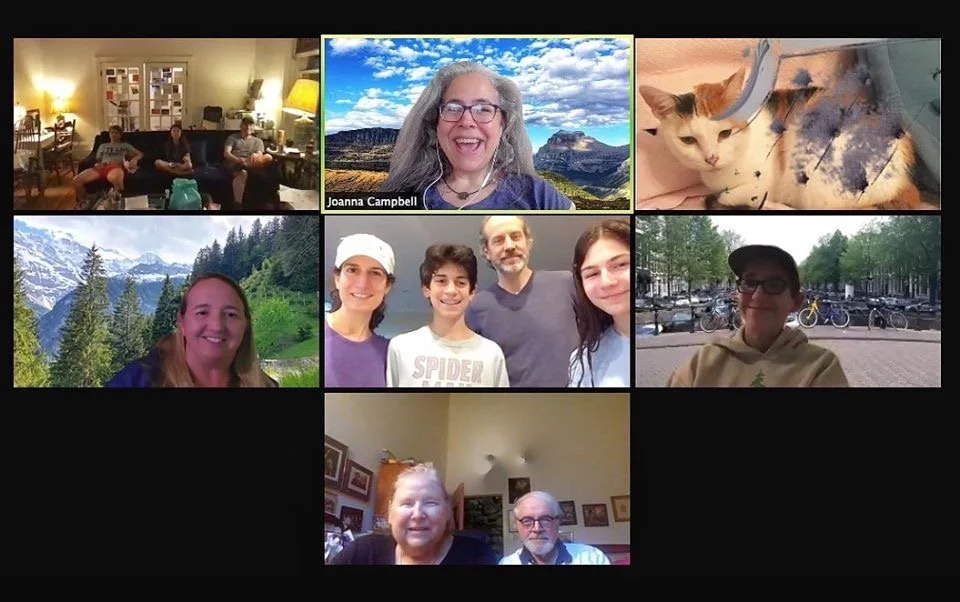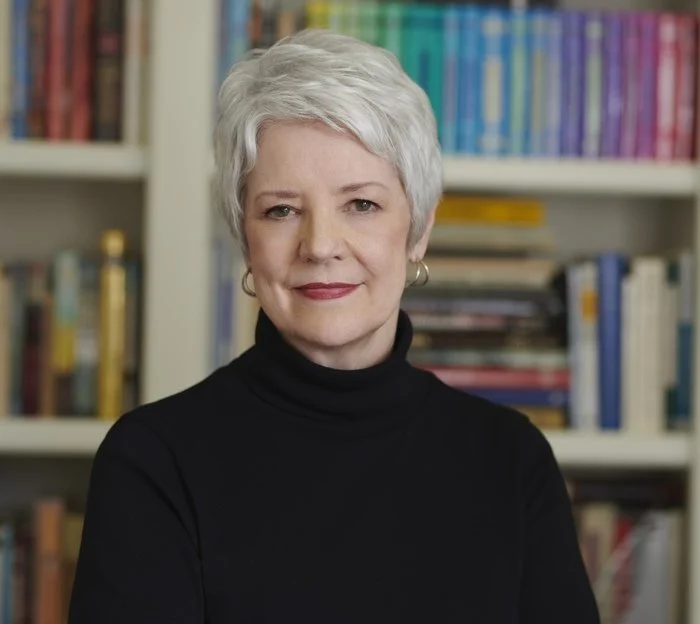Sue Monk Kidd: Incubation in Darkness
“Today (August 12) is my birthday. It makes me think of the new life I’m incubating and the Birth-day still to come. Today I’ll talk to myself. I’ll say, ‘Accept life—the places it bleeds and the places it smiles. That’s your most holy and human task. Gather up the pain and the questions and hold them like a child on your lap. Have faith in God, in the movement of your soul. Accept what is. Accept the dark. It’s okay. Just be true.’”—Sue Monk Kidd, “A Journal Entry” in When the Heart Waits: Spiritual Direction for Life’s Sacred Questions (HarperOne, 1992).
family zoom during pandemic
Today, we continue to share stories from author Sue Monk Kidd. I found two copies of her book, When the Heart Waits: Spiritual Direction for Life’s Sacred Questions, unread in my home library. So when I saw the book on the list for my spiritual direction studies at the Haden Institute, I took this as a sign to read it. I still remember the first time I met Sue Monk Kidd. She was on tour for her book The Dance of the Dissident Daughter. I took all my female partners in my medical group and my daughter to hear her. One of my partners cried the entire time and bought several books.
Kidd is as impressive a speaker as a writer. She reminds us of Marion Woodman’s writings about creative suffering in the dark. Creative suffering burns clean, unlike neurotic suffering, which creates more soot. Creative suffering “easters” us or transforms us, chooses a new way, owns our shadow, and heals our wounds—as opposed to neurotic or self-pitying suffering, which is un-transforming and leads to despair. Kidd continues to tell us that pain may not kill us but running from it might.
At a retreat she led at Kanuga conference center, Kidd described a healing exercise where we placed on the altar cut-up scraps of colored paper representing wounds and pain from our lives. We then offered them up, turning them over instead of pushing them down or trying to escape from them.
She reminds us that the most significant events in Jesus’ life occurred in darkness: birth, arrest, death, and resurrection. Then, as tiny bits of light come out in our lives, we begin eastering—much like the lighting of the Paschal candle and bringing light into the dark world at the Easter Vigil. This is a great image for me, as the deacon often carries the Paschal candle, saying “the light of Christ” three times before singing the Exsultet, giving thanks for the light. The Paschal candle we use is a natural wax and, for some reason, is always challenging to extinguish!
Kidd describes how our addictions keep us unaware of what is going on inside of us as well as outside of us. When I live in my addictions, I deny the harm to my body, soul, and heart that comes from wearing my many false selves. Thirty-two years ago, when I was introduced to a twelve-step program, I got my voice back; but the recovery of dealing with the tensions of all the false selves is still part of my recovery trying to live the steps. I experience more and more easterings or resurrections, but it is still hard work. When the true self emerges, there is light and delight in life. Gratitude is what living in the true self brings. God becomes our playmate, and we find our inner child.
Kidd writes about our accelerated, instant, quick “fast-food” society. I remember talking to a ten-year-old about playing chess, and her response was, “It takes too long.”
Kidd also reminds us of our desire for shortcut religion, looking for what Bonhoeffer called cheap grace, “Long on butterflies but short on cocoons.”
I go down to our den this afternoon and find my husband and our almost thirteen-year-old grandson quietly playing chess. I feel hope.
What great tragedies happened in this pandemic and our recent tornadoes in Arkansas, but we are also beginning to see easterings —neighbors and churches caring for each other, families checking on each other, more families getting vaccines, a realization of the value of community and staying healthy in community.
sue monk kidd

